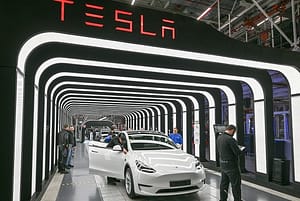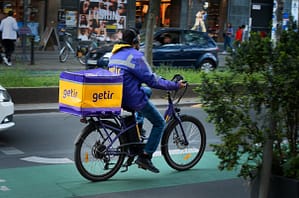Much-loved British brands including Johnnie Walker, Dove and Burberry have outpaced the wider UK trend to grow their worth by a combined $2.3 billion, according to the latest Kantar BrandZ Most Valuable UK Brands 2023 report.
Johnnie Walker has entered the top five most valuable UK brands for the first time, rising four places and growing its value to $10.9 billion – an increase of 32% on its 2021 level.
Dove has also shot up the ranking to ninth place with a value of $6.3 billion. Along with Johnnie Walker, Burberry is the fastest growing brand in the top 20, achieving a 17% increase to hit $4.7 billion and putting it in 15th place. Vodafone held onto the number one spot in this year’s report, now worth $26 billion.
Adele Jolliffe, head of brand consultants at Kantar Insights UK said, “What brands like Johnnie Walker, Dove and Burberry do especially well is fundamentally knowing who they are and what they stand for, while adapting to people’s changing behaviours and attitudes.
“We’ve seen some high-profile rebrands this year like Twitter to X and other businesses might be tempted to try something new as inflation bites, but organisations shouldn’t forget the value of the brand equity they’ve built up. This is absolutely not about standing still, but it is about understanding what consumers like about your brand, and protecting and investing in that.”
Collectively, the UK’s leading 75 brands are now worth $242 billion, a fall of 14% year on year which is largely in line with the annual global trend which shows a fall of 20%. However, in contrast, the most valuable global brands have increased their value by 39% since 2020. For the UK, the figure is just 6%.
Jolliffe said, “The UK’s year-on-year performance may paint a similar picture to the global trend but if we dig a little deeper into the numbers, UK is lagging in the medium term. UK brands are actually falling behind their global peers and the few success stories are an exception to the rule.
Kantar’s analysis shows that UK brands are failing to set themselves apart from the competition.
Jolliffe added, “Of the eight markets we analysed, UK brands are right at the bottom for how different consumers perceive them to be. We have some incredibly well-known names in this country and they come to mind easily for people, but being familiar isn’t enough to get consumers to put their hands in their pockets and pay the prices brands need to charge to sustain healthy margins.”
The findings demonstrate the risks for brands who don’t distinguish themselves, most notably the challenges faced by Wilko which collapsed into administration in August. Wilko was known for offering value but in terms of that crucial difference for its shoppers, it was 13th in its competitive set, losing out to rivals such as B&M.
With interest rates hitting a 15-year high earlier this year, businesses will be looking to grow revenue and profitability to fund investment in their brands and products. This presents a golden opportunity for marketers, says Adele Jolliffe: “It’s going to get more expensive for organisations to borrow to pay for product innovation and development, so they’ll need to generate their own surpluses. Marketing can play a fundamental role in delivering that growth.
“Our data shows that brand – and brand difference in particular – is one of the most powerful tools a business has to justify its pricing. M&S Food is a great example of this. It has one of the strongest pricing power scores in its sector thanks to a consistent focus on shaping its reputation as a retailer with a difference. Ultimately, the future stars of marketing will be the people who really understand this link between pricing and brand building, and who use it to their advantage to drive profitability.”






Leave a Comment